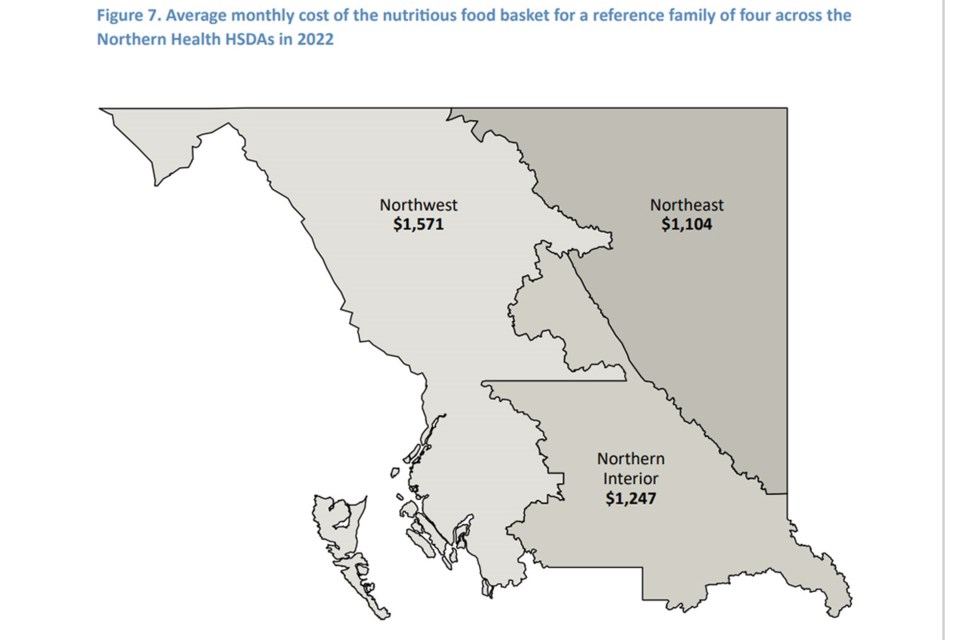The Northwest health service delivery area has the highest average food costs in B.C., according to by the B.C. Centre for Disease Control.
The study compared the monthly costs a nutritious diet for a hypothetical family of four (one man, one woman, one teenage boy and one young girl) at 245 stores across 16 health service delivery areas (HSDAs) in B.C. The average monthly cost to feed the family was $1,263, based on data from May and June of 2022.
“While the cost of the nutritious food basket in 2022 cannot be compared to previous food costing data in BC, economic data show that the cost of living is increasing, and that Canada is currently experiencing historic inflation,” the report says. “The price of food does not affect everyone equally. It has the biggest impact on those with the lowest incomes… This is concerning, as household food insecurity is a serious public health issue with negative impacts on health and health system utilization and costs.”
In the Northwest HSDA - which includes communities like Kitimat, Terrace, Prince Rupert and Haida Gwaii – the cost to feed the family was $1,571, nearly 25 per cent above the B.C. average.
In the Northern Interior HSDA, which includes Prince George and area, the cost was $1,247 per month (roughly one per cent below average). The Northeast HSDA - which includes Dawson Creek, Fort St. John and area – had the lowest food costs in the province at $1,104 per month, nearly 13 per cent below average.
The average cost of food across Northern Health was $1,300 per month. The study only looked at 18 stores in the northern region – six in each of the three northern HSDAs.
Overall, Vancouver Island Health ($1,366 per month) had the highest average cost of food, followed by Vancouver Coastal Health ($1,311), Northern Health ($1,300), Interior Health ($1,264) and Fraser Health ($1,193.)
“The food costing methodology largely excludes rural, remote and Indigenous communities, where there are a limited number of full-service grocery stores as well as challenges to accessing remote areas to collect food cost data,” the report says. “The food costs in this report also do not take into account other costs associated with accessing food such as transportation, fuel and time…”
An additional report is planned for later this year, to address the cost of food in remote, rural and Indigenous communities.

